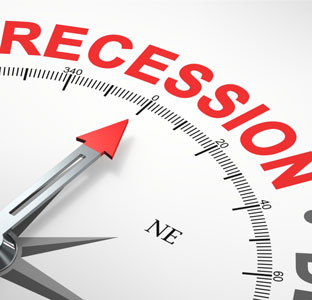Recession or Not?
Historically, the onset of a recession seems to happen quickly. Why is that? Former Federal Reserve Chairmen’s Janet Yellen and Ben Bernanke spoke on January 4, 2019:
“I don’t think that expansions just die of old age. Two things usually end them. One is financial imbalances and the other is the Fed, and usually when the Fed ends an expansion, it’s because inflation has gotten out of control and the Fed needs to tighten to bring it down.” Janet Yellen
“But as Janet says, expansions don’t die of old age. I’d like to say they get murdered, instead.” Ben Bernanke
Over the last 100 years, the primary causes of pushing us into a recession are as mentioned above, the Federal Reserve (Fed) tightens monetary policy to much, oil prices spike causing inflation, and a financial crisis (think 2008 – 2009).
More times than not, the Fed has been the perpetrator and its own worst enemy by leading us into recession. The markets are fearful now, that Fed Chairman Powell may be leading us into another recession.
Currently, in the financial press, all the talk is of how fast the economy is growing – what to expect of Gross Domestic Product (GDP), retail sales, and consumer confidence. The Fed has been saying they are “data dependent”. This seems to be true except when it comes to the markets. When the markets do not cooperate (a decline of almost 20% in December) they change their public pronouncements about what they are tracking. Confusing – you bet! Chairman Powell has gone from hawkish (interest rate increases) before December, to dovish (pause in rate hikes) after the market took a dive. So, what should we be tracking to get a handle on where we are headed?
Yield Curve: An inverted yield curve (short-term interest rates higher than long-term interest rates) is considered the most reliable historical indicator of impending recession. Because the Fed can only raise or lower short-term interest rates, we look to long-term interest rates for a “tell” as to economic growth and inflationary expectations. Today, we have a flattening yield curve. Long-term interest rates have come down recently even though the Fed has been raising short-term interest rates. The bond market is signaling a disagreement with the Fed. They see slowing growth and little inflation. Before January 4, 2019, Chairman Powell talked of continuing strong economic growth and therefore the need to continue to raise interest rates. The Fed was looking to continue to raise at least two more times in 2019. After the market dive, the Chairman has changed his tune. They will pause, and there may be no interest rate increases in 2019. Raising short-term interest rates in a slowing U.S. economy, coupled with already slowing global economies, is a recipe for recession.
Fed’s Balance Sheet: Along with interest rate increases the Fed has been starting to “normalize” their balance sheet. The purchase of Treasury bonds and mortgage backed securities over the last 9.5 years has flooded the market with liquidity (quantitative easing) in their stated attempt to raise asset prices. Mission accomplished as they have created bubbles in stocks, bonds, housing prices and art work to name a few. Now the aim is to let the purchased bonds mature and not reinvest all that money (quantitative tightening). This will drain liquidity from the markets – the opposite of what they were doing to increase asset prices. What the Fed might be missing here is that the marketplace perceives – even if the Fed officially stops raising interest rates – an approximate $600 billion reduction in their balance sheet is the equivalent to about two rate hikes.
Inflation: The wild card for the Fed’s ability to stop raising interest rates may be oil prices – the Fed’s favorite inflation indicator. Last year, oil prices came down by about 40%. Recently they have increased by about 20%. If oil prices continue to increase, it may force the Fed’s hand. As Janet Yellen said, they may have to raise interest rates to combat inflation, but they would be doing so in a slowing economic environment. Under such a scenario, they would be potentially “murdering” the economy.
Market Commentary:
The new Fed Chairman is in a difficult position. Jerome Powell is not an academic, but a man of extensive market experience. He realizes the need to “normalize” markets and interest rates. He wants the Fed to get out of the business of manipulating markets. Chairman Powell also realizes the danger of going into a recession with little or no ability to help the economy grow if interest rates are at 2.0%-2.5%. We at Occam Capital® had hoped that the Fed would start to normalize when the economy was stronger back in 2012 – 2013, but instead they chose to continue this experiment of quantitative easing and keeping interest rates extraordinarily low. We are in uncharted territory, never having to unwind a balance sheet of this magnitude. Uncertainly creates unsettling times in the markets, but it also presents opportunity for the future. For now, we continue to maintain some cash reserves and a conservative investment posture, but we are ever hopeful that opportunities will be created for the long term.
We appreciate and thank you for the trust and confidence you have placed in Occam Capital® Management, LLC, and wish you a Happy New Year!

